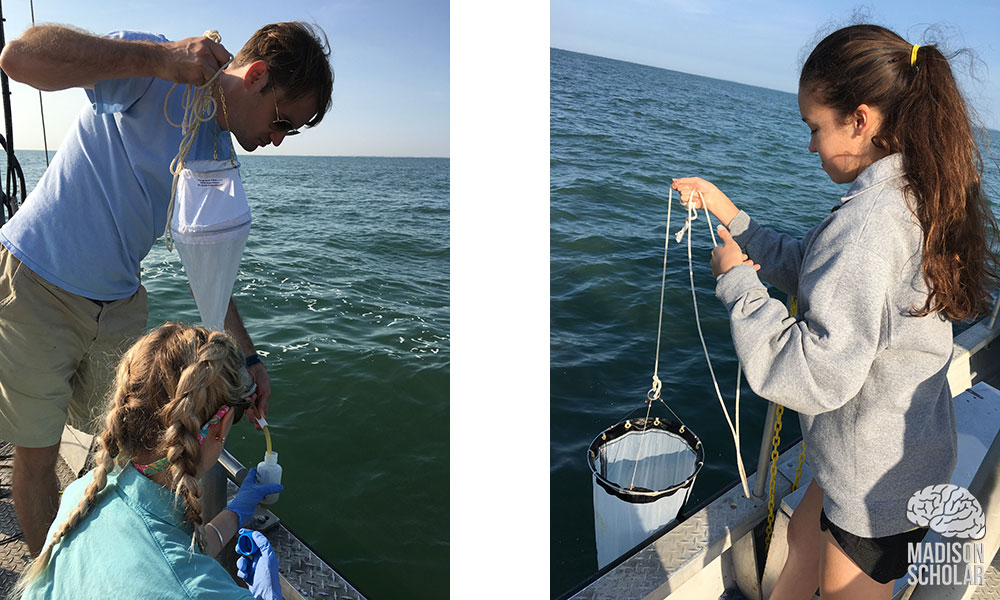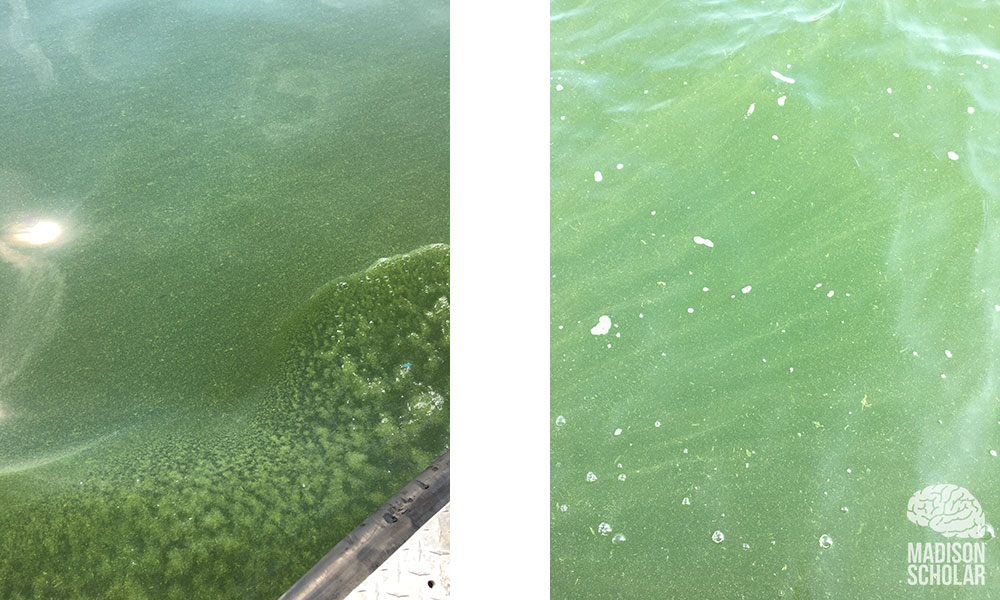It's not just an eyesore
JMU researchers look for clues to success of harmful algal blooms
Science and Technology
SUMMARY: A pair of James Madison University researchers has received $430,000 from the National Science Foundation to conduct a three-year study into bacteria that live with the harmful cyanobacterium, Microcystis.
It is well known that massive algae blooms thrive when nourished by nutrients such as nitrogen and phosphorous, especially in warm water. But could there be more to their success than just an abundance of food and favorable environmental conditions?
A pair of James Madison University researchers has received $430,000 from the National Science Foundation to conduct a three-year study into bacteria that live with the harmful cyanobacterium, Microcystis, to determine if they benefit the blooms. If the relationship proves beneficial, it could lead to more effective ways of thwarting the unsightly—and sometimes toxic—growths, said Morgan Steffen and Louie Wurch, both assistant professors of biology.
"Our end goal is always to come up with mitigation strategies that are going to work," Steffen said.
Added Wurch, "Understanding the role the bacteria play in promoting these harmful algal blooms extends to other algae as well. Microcystis is sort of a model for a high biomass-forming algal bloom and there are other species. Maybe bacteria helping them is what we need to be looking at, microbial interactions."
Harmful algal blooms occur when colonies of Microcystis grow out of control while producing toxins that can cause effects on people, fish, shellfish, marine mammals and birds.
The Associated Press has been documenting the severity of the algal bloom problem across the U.S., and in a November 16 story, stated the "sometimes toxic blobs are fouling waterways from the Great Lakes to Chesapeake Bay, from the Snake River in Idaho to New York's Finger Lakes and reservoirs in California's Central Valley."

Photos courtesy of Morgan Steffen and Louie Wurch
In addition to being eyesores and discouraging people from water recreation, harmful algal blooms release toxins that can kill animals and sicken people. The blooms also consume oxygen from the water and can block sunlight from reaching underwater vegetation, which causes a host of habitat problems.
As one of her first projects at JMU, Steffen was part of a research team that included scientists from the University of Tennessee who determined a virus was the most likely cause of a bloom releasing toxins into the Toledo, Ohio drinking water supply in 2014. The toxins, released by a bloom on Lake Erie, forced the water system to shut down for two days.
Steffen said her dissertation research at the University of Tennessee "pointed us toward the idea that there are all these other bacteria that live in the water with the Microcystis, but we've never actually done any studies to figure out if they're helping it. So we're trying to figure out what they're doing and if they function in any way that makes the cyanobacteria more successful."
The research will involve lots of laboratory work, where students will help identify the bacteria living with the harmful algae and then try to determine the existence of a beneficial relationship. Steffen, Wurch and students also will travel to China in June to do research at Lake Taihu, where harmful algal blooms occur year-round.

